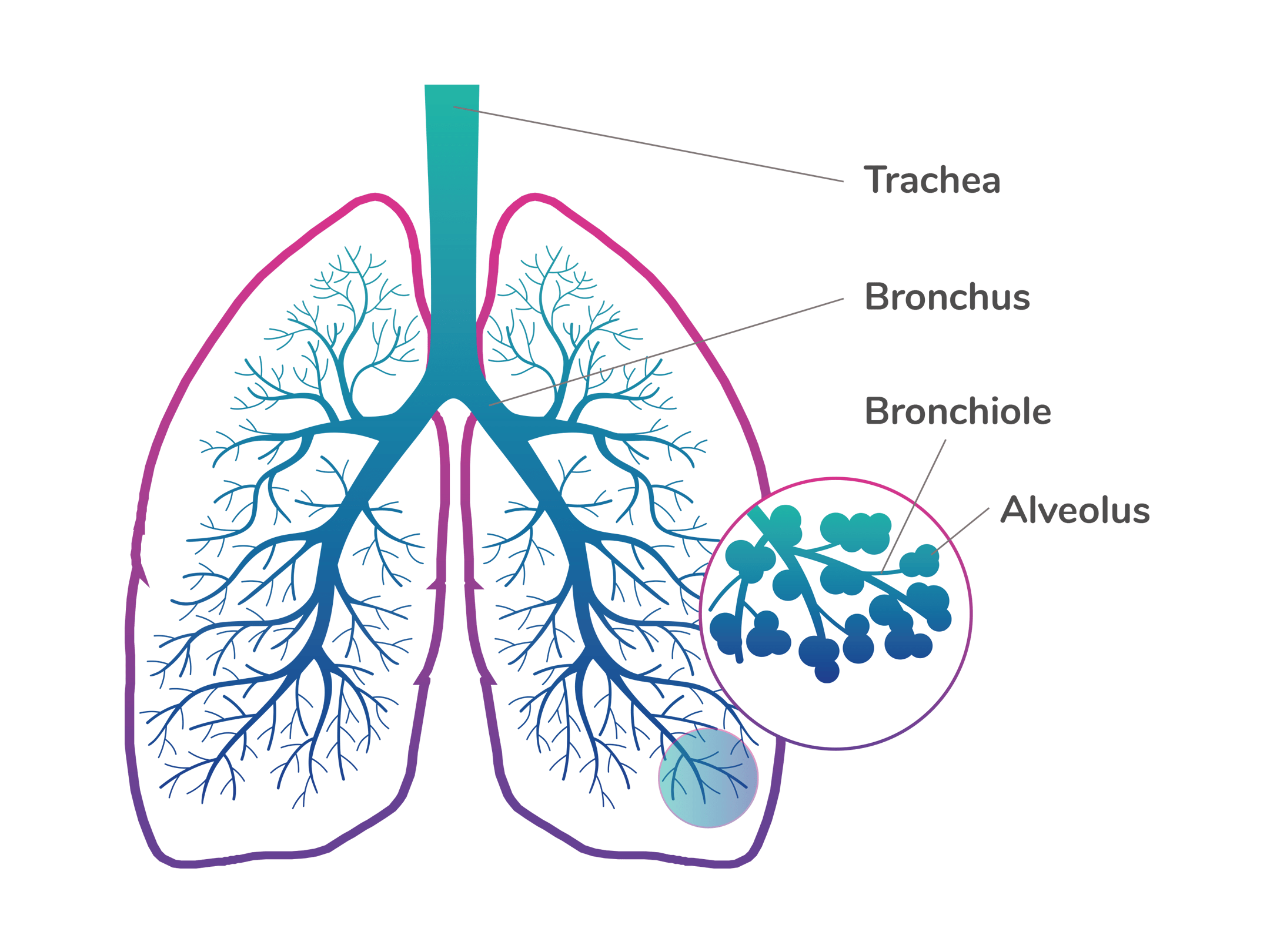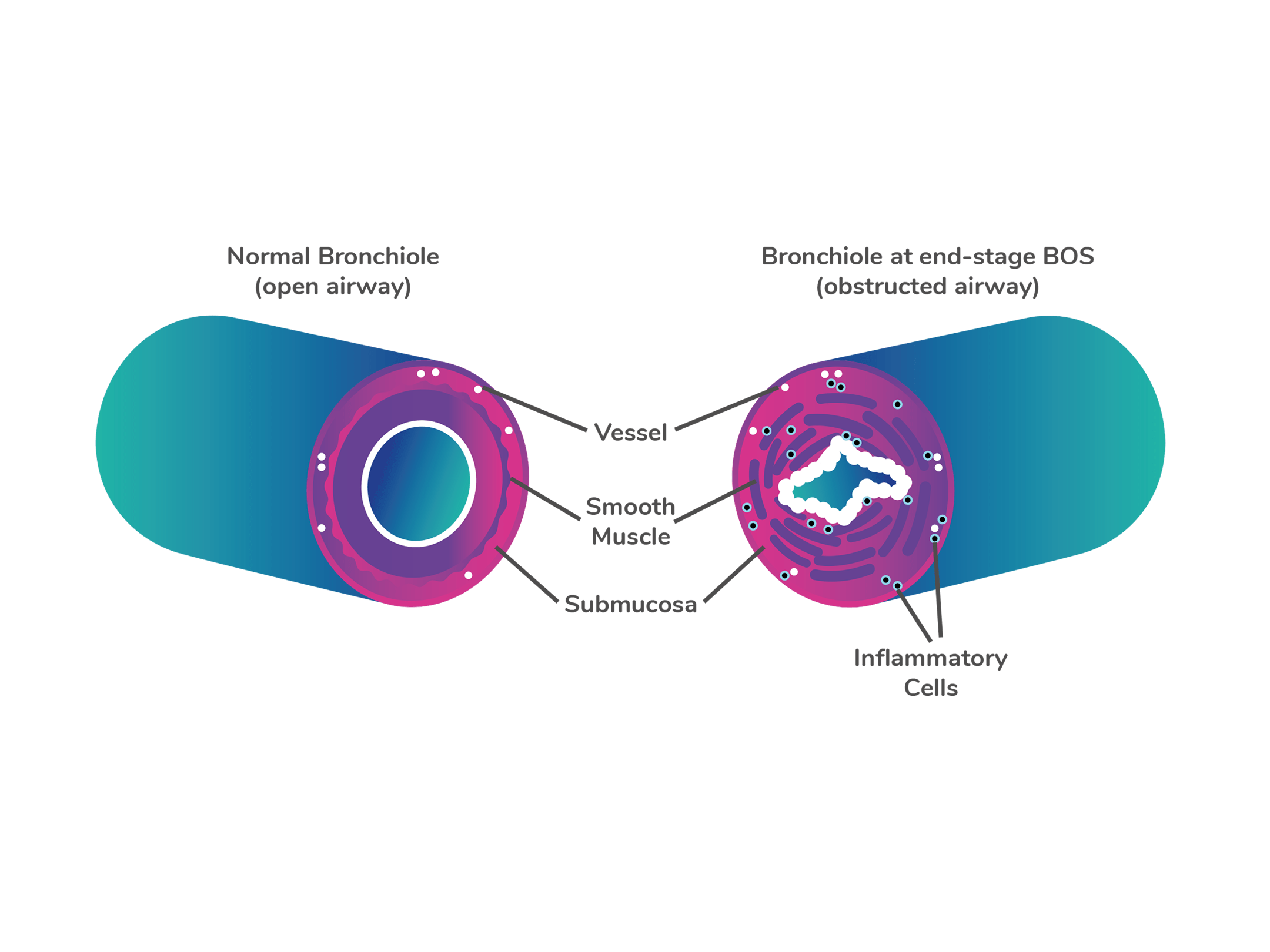About BOS
Bronchiolitis obliterans syndrome (BOS) is the most common form of chronic lung allograft dysfunction (CLAD) after lung transplantation (also referred to as chronic rejection). Chronic rejection can occur as the result of an immune reaction to the transplanted lung or lungs. In BOS, an uncontrolled immune reaction leads to chronic inflammation of the small airways (the bronchioles) of the lungs. This causes scarring and narrowing of the airways that continues to worsen over time, limiting the person's ability to breathe.
Not all lung transplant patients develop BOS during their lifetime. On average, approximately 3 in 10 patients (30%) develop BOS in 3 years, and approximately 5 in 10 patients (50%) develop BOS in 5 years.1 There is no approved treatment indicated for BOS.2
1. Ruttens D, et al. PLoS ONE. 2018;13(4): e0193564. (https://doi.org/10.1371/journal.pone.0193564.)
2. Verleden GM, et al. J Heart Lung Transplant. 2019; 38(5):493-503. (https://www.jhltonline.org/article/S1053-2498(19)31432-9/fulltext).

The trachea, also known as the windpipe, delivers air to the bronchus. The bronchus (plural is bronchi) branches off into smaller bronchioles, that ultimately reach the alveoli.
Alveoli are tiny sacs which allow for the exchange of oxygen and carbon dioxide in the lungs. The body’s tissues receive oxygen, and carbon dioxide can exit the body.

An uncontrolled immune reaction leads to chronic inflammation of the bronchioles, causing scarring and narrowing of the airways of the lung.
BOS is a long-term (chronic) rejection process that can occur in the transplanted lung or lungs. People become symptomatic from BOS as a result of decreased lung function and common symptoms include:
- Shortness of breath
- Decreased exercise or activity tolerance and endurance
- Fatigue
- Cough, sometimes with increased mucus production
Only a doctor/provider can diagnose BOS or determine if these symptoms are due to BOS.
Bronchiolitis obliterans. Genetic and Rare Diseases Information Center. (https://rarediseases.info.nih.gov/diseases/9551/bronchiolitis-obliterans).
As part of care following lung transplantation, physicians will perform tests to determine how well the lungs are functioning. Spirometry, and in particular FEV1, is a key measurement of lung function. BOS may be diagnosed if lung function continues to decline after lung transplantation. Chest x-ray, computerized tomography (CT) scan, and lung biopsy are other methods used to diagnose BOS, or in the alternative, to exclude BOS because of other potential causes for the decline in FEV1, such as infection.
Learn more about spirometry here, the most common type of breathing or pulmonary function test.